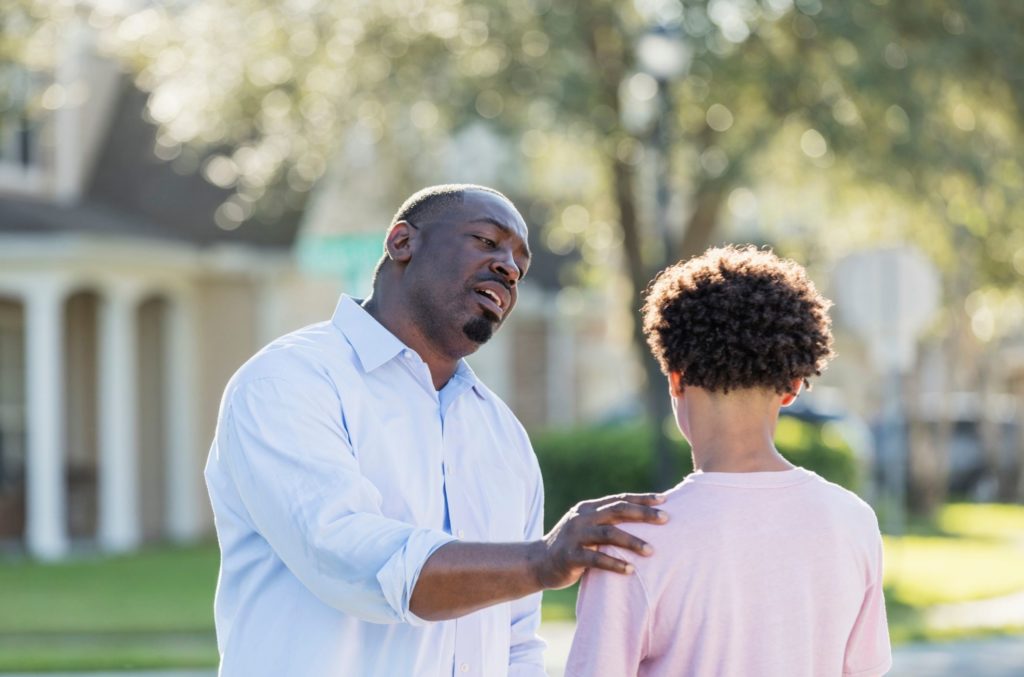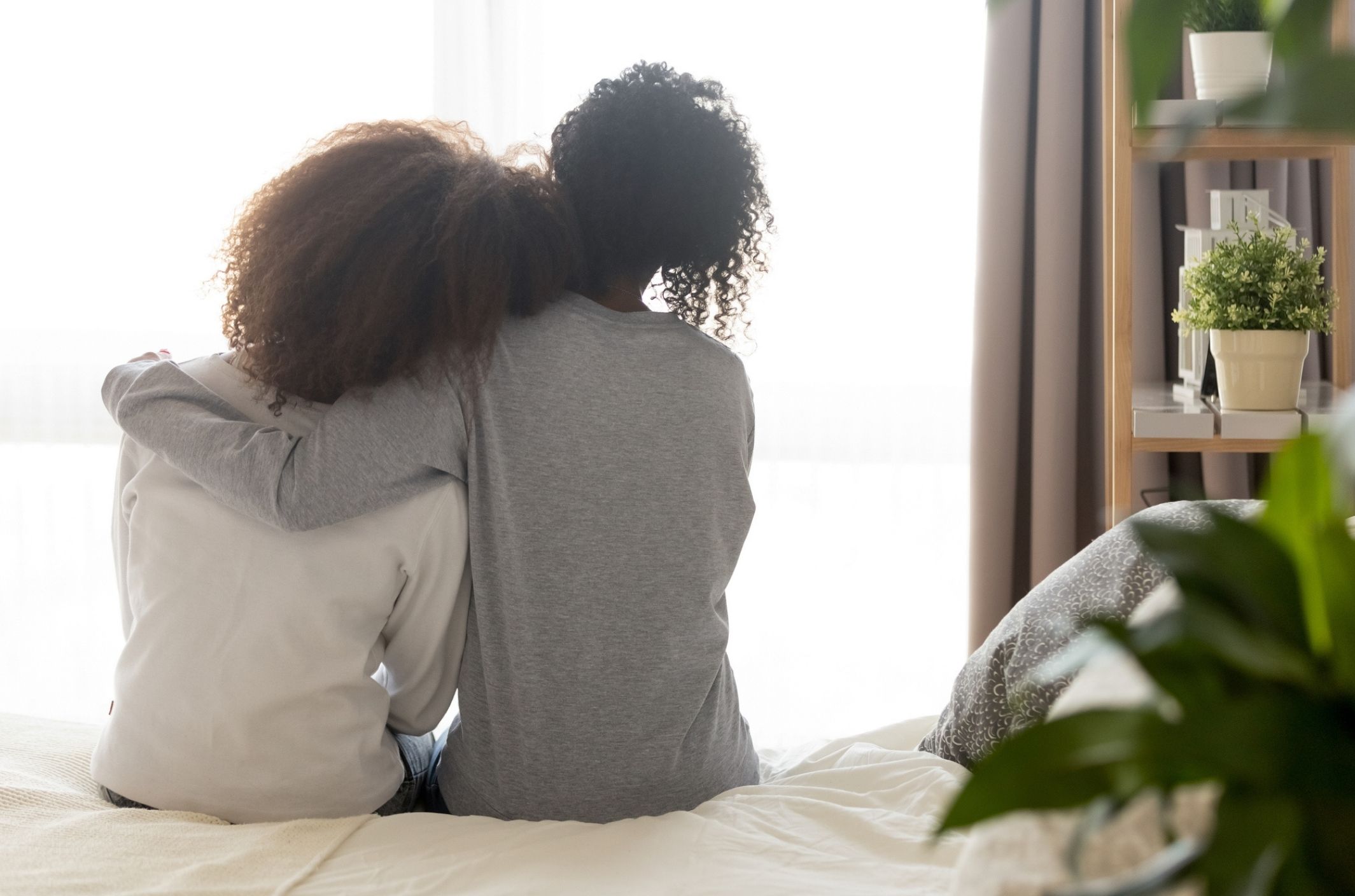You may have heard terms like “racial trauma” and “minority stress” before. We’ll look at racism and mental health by exploring the fundamental concepts necessary to grasp the impact minority stress has on physical and mental health. Plus, we’ll discuss why these terms are relevant to understanding, protecting, and promoting good mental health.
You may have heard terms like “racial trauma” and “minority stress” before. We’ll look at racism and mental health by exploring the fundamental concepts necessary to grasp the impact minority stress has on physical and mental health. Plus, we’ll discuss why these terms are relevant to understanding, protecting, and promoting good mental health.
What is minority stress?
The word “minority” refers to any group or community whose needs and experiences don’t fall into mainstream culture and society. This includes people who identify as a member of Black, Indigenous, People of Color (BIPOC), Lesbian, Gay, Bisexual, Trans, Queer, Intersex (LGBTQI+), and differently-abled communities.
The minority stress model posits that exposure to racial and other microaggressions contributes to diminished mental well-being in groups such as racial and gender/ sexual minorities. Numerous studies back this model.
Research has also shown that the negative impact is even more significant for folks with multiple marginalized identities. So, for example, someone who’s differently-abled and Indigenous is subjected to the harm of ableism (discrimination favoring physical ability) and racism (discrimination based on racial identity.)
What is intersectionality?
But the negative effect for a differently-abled, BIPOC person is cumulative. This means that the intersection of one marginalized identity with another yields a negative impact more significant than that of each identity. In 1989, Kimberlé Crenshaw gave a name to this phenomenon when she coined the term “intersectionality.”
Suppose you have intersectional, or overlapping, marginalized social and cultural identities. The resulting stress you experience resulting from these identities has a cumulative negative impact on both your mental and physical health.
What are microaggressions?
Microaggressions are words, gestures, and actions that reflect discrimination in indirect or subtle ways. Sometimes well-intended efforts at diversity can exacerbate issues. One example is the “color-blind” ideology which aims to equalize experiences but ends up falling short.
Unfortunately, the philosophy of color-blindness is invalidating and dismissive. It fails to account for systemic issues and doesn’t respect positive differences. This perspective can make individuals feel responsible for mental stress instead of identifying the actual systemic or chronic stressors.
Other examples of microaggressions are words, gestures, and actions that point to assumptions about criminality. For example, a White person might clutch their bag when encountering a person of color, or a shop owner may follow a non-White person around in their shop. For more info, check out Racial Microaggressions in Everyday Life.
With this understanding, let’s look at the relationship between microaggressions and mental health.
How oppression impacts mental health
Someone with one or more marginal identities experiences and is traumatized by microaggressions on a daily basis. As we noted, the stress that’s caused as a result of these experiences is cumulative.
Over time, that stress can have a significant impact on mental health and emotional wellbeing. Here are some of the ways that oppression impacts members of LGBTQI+ and BIPOC communities.
LGBTQI+ communities
Studies worldwide have indicated that youth who identify as Lesbian, Gay, Bisexual, Pansexual, Transgender, Intersex, Queer, Questioning (or LGBTQI+) are at increased risk of mental health disorders, including anxiety and depression.
This is due to complex factors such as their increased likelihood to experience hostile home environments, harassment, physical attacks, and systemic inequality. Experiences such as being targeted for physical attacks due to gender identity are associated with suicidal ideation and risk.
Black, Indigenous, People of Color
The term “racial trauma” is often used to describe the experience of BIPOC people. What is racial trauma? It’s the minority stress experienced by members of a racial minority.
As author Mary Frances Winters describes in her book Black Fatigue, any person coping with chronic experiences of injustice will also experience the negative health impact of racism. This is particularly true for Black Americans who may have endured such experiences for generations.
Experiences of microaggressions are correlated with cultural mistrust, which negatively impacts help-seeking behaviors and a sense of well-being. Studies have also identified psychological distress linked to racial microaggressions in Asian and Latino populations.
Acknowledging the harm it caused, the American Psychiatric Association formally apologized in 2021 for a history of systemic racism, particularly toward BIPOC people, that led to discriminatory treatment in healthcare.
Beyond the harm caused to any one person, there’s also the matter of intergenerational patterns of stress and trauma. These have an impact not just on individuals but entire families.
In this way, systemic oppression or marginalization impacts health and psychosocial outcomes for many BIPOC people. These folks may be subjected to microaggressions and racism. They may also have parents and ancestors who are refugees, displaced, or maybe survivors of war, internment, or genocide.
Resources for minority healing
A powerful example of a community and family healing resource is the Family-Care, Community-Care and Self-Care Tool Kit. It’s offered by the Association of Black Psychologists and the Community Healing Network. The purpose of this toolkit is to comfort and inspire people of African ancestry during these challenging times. It “provides resources to help us take care of ourselves and each other, and strengthen our sense of community for the journey ahead.”
Another helpful option is The Radical Healing framework for healing from racial and ethnic trauma. The Racial Healing Handbook by Dr. Annieliese Singh can be used alone as a self-help resource. You may also want to bring it into therapy sessions to discuss with your mental health provider.
What is an ally?
Allyship is an active and ongoing process wherein a person from a position of greater privilege and power engages in re-evaluation and unlearning. This is an effort that seeks to assist in solidarity with a marginalized group.
Below are the recommendations from the Guide to Allyship. This is how you can use your privilege to fight for justice. You
- Take on the struggle as your own.
- Stand up, even when scared.
- Transfer the benefits of your privilege to those without it.
- Acknowledge that even though you feel pain, the conversation is not about you.
- Be willing to own your mistakes and de-center yourself.
- Understand that your education about justice is your choice and responsibility rather than someone else’s.
What allies can do to help
Simple everyday examples include a cisgender person using pronouns or speaking out against misgendering a peer in a meeting. This could also mean a White man advocating for diverse gender and race representation at a work panel or in hiring.
Every movement for justice and equality benefits community health, and every public health or justice movement benefits from allies and collaborators. If you’re looking for more information, check out the Guide to Allyship, an open-source guide to help allies be more effective and less harmful in efforts towards equality.
Takeaway
- Social structures such as systemic racism, ableism, and homophobia cause chronic stressors, which are sometimes intergenerational in impact.
- The cumulative impact of microaggressions from these stressors negatively impacts mental and physical health.
- Coping skills, positive identity, culturally adapted, and affirming treatments and community connections are helpful to mitigate the negative impacts of minority stress.
- Allies and healthcare professionals can join in allyship by making the fight for equality a personal responsibility.


